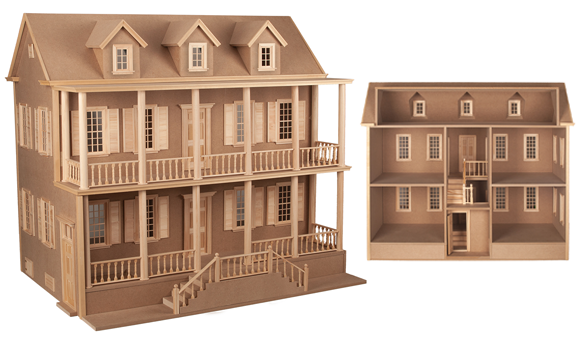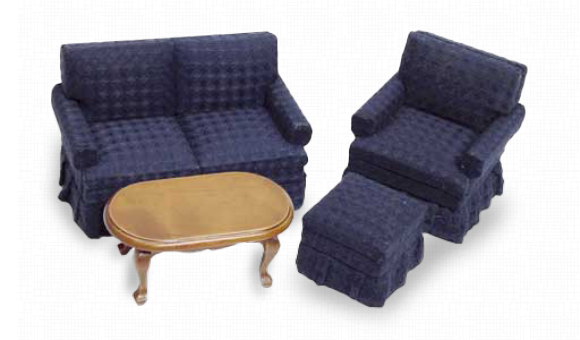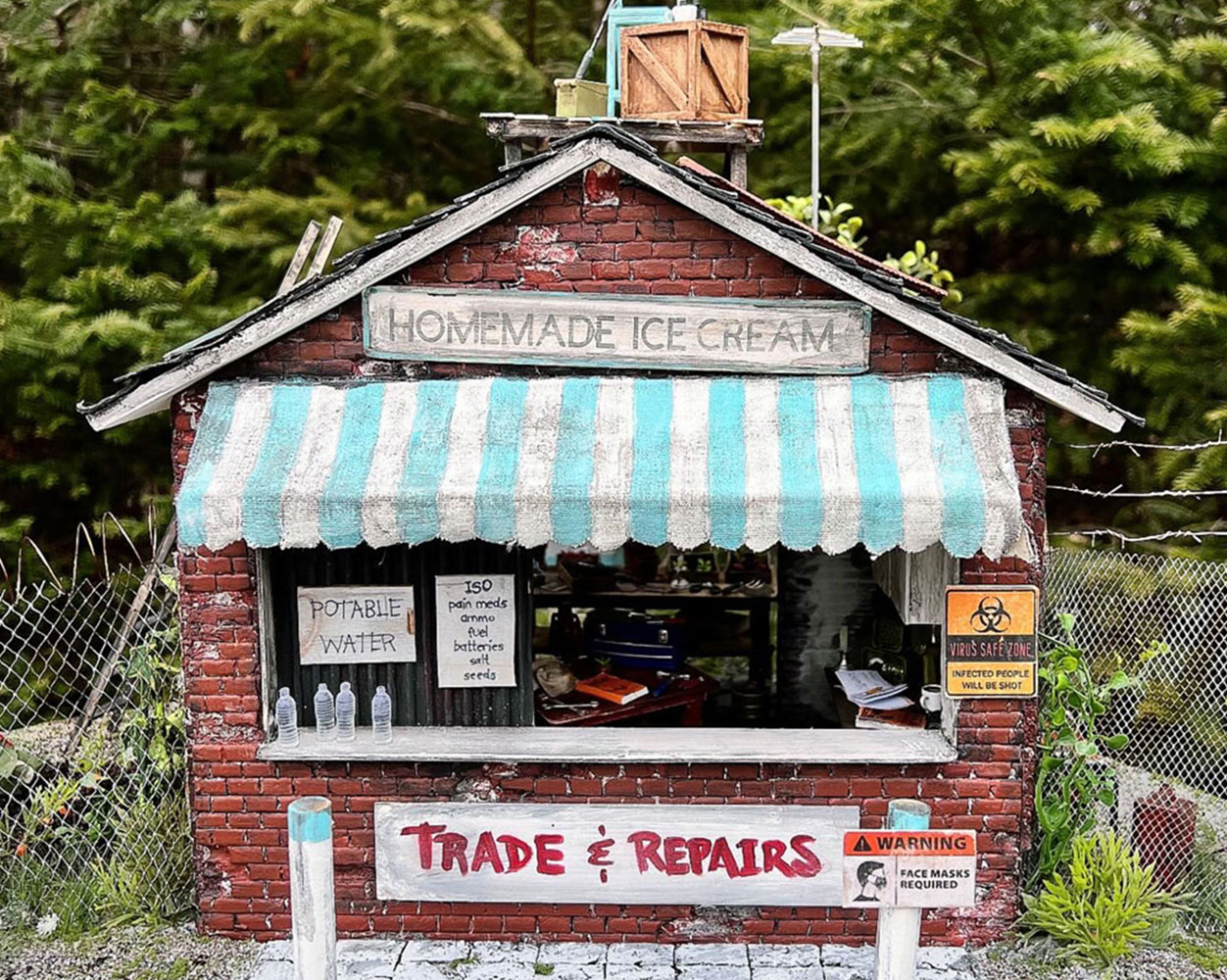by Fran Casselman

Materials:
#67022 Snow & White Bunnies
#66180 12 Colored Easter Eggs
#24484 24 Stems of Pink Million Stars Flowers
#2130 Noch Grass
#9844 Light/Dark Green Foliage/Ground Cover
#1729 Red/Purple/Marigold Garden Growies
#60935 Set of Four Finger Drills
#54400 Reverse-Action Tweezers
#97008 Ultimate Craft Knife
Natural brown hen’s egg shell
Small sharp scissors with curved blades (manicure scissors)
Emery board or nail file
Small forked twig
Scraps of foam core and cardstock
Decorative vinyl stickers
Gold permanent marker pen
Sky-blue craft paint
White tissue paper
Circle & Oval templates
White glue
Pencil
I just happened to have brown eggs when planning this project but there should be no difference in using white eggs. My egg’s shell was fairly tough, which I learned means a younger hen. A thinner shell will be easier to cut.
Eggshells are surprisingly tough but do have to be handled carefully. Always wash the whole egg to avoid any possible contamination. To empty a shell for a diorama scene, cut an opening about 1/4" to 3/8" in diameter at the bottom of the egg. Do this by drilling into the shell and carefully cutting the opening with the small sharp scissors, following the curve of the shell with the curve of the blade. If the shell surface is too slick for the drill, first sand away a flatter spot with the emery board.
To empty the egg, remove any shell fragments with tweezers and shake the liquid egg into a bowl for other use. Fresh eggs are best because the albumin is thinner, but it is also helpful to “stir” the egg inside the shell, using an ice pick or similar tool, to break up the yolk for easier removal. When empty, wash well and allow to dry thoroughly. (Suggest doing several at one time.)
With the oval template, position and draw the shape of the opening on the surface of the shell. Using the tip of a craft knife, work slowly and carefully to score the outline into the surface of the shell. Try to hold the egg so that any slips of your knife will scratch the area to be cut away, not the outside. Sand a flatter spot in the center of the outline and drill an opening for the scissors. Cut carefully; the shell should “want” to break on the scored line.
If cracks develop, but the shell remains whole, do not worry. Add water to a bit of white glue and paint the inside area of the crack. Tear a scrap of white tissue paper to cover the area and place it in the glue. Paint another layer of glue over the tissue, smoothing any wrinkles. Let dry.
Make sure the egg will stand upright on the original opening. Sand or trim the edges to get a flat area. Repair any cracks as noted above, or use that method to reinforce the entire shell. Glue the shell’s base to a scrap of cardstock; don’t worry about the exact shape or size, it can be trimmed after the glue is dry.
Paint the entire inside of the shell with sky blue craft acrylic (or your color of choice).
With the circle template, set the egg into the openings to find the size for the platform base of the scene; mine was about 1 1/4". It must not be too large to go through the opening. I used foam core, but you can use cardstock or anything you like. With foam core or any thicker material, draw the circle and cut it out with the craft knife, slanting inward to make a tapered base. Do this flat on a cutting mat for best (safest) results.
Paint the surface, cover it with mini grass or use a scrap of felt; whatever will work best for your scene. If you are going to add a twig tree or anything taller than the opening, figure out the placement now before the base is glued in. My twig is “planted” into the foam core and was tricky to insert, but could be adjusted afterward. Make sure it is level, and glue the base in place when everything is where you want it.
Trim the outside edge of the opening now, before adding the decorative items, because you will need to manipulate the egg and have your fingers in the opening. Use a vinyl sticker border as I did, or very fine lace, cording trim, bunka or even layers of silk flower petals. Use matching color paint or marker to color the edge of the shell if necessary.
Glue in the elements of the scene, working forward from the back. Let the glue dry, and enjoy your egg diorama!



